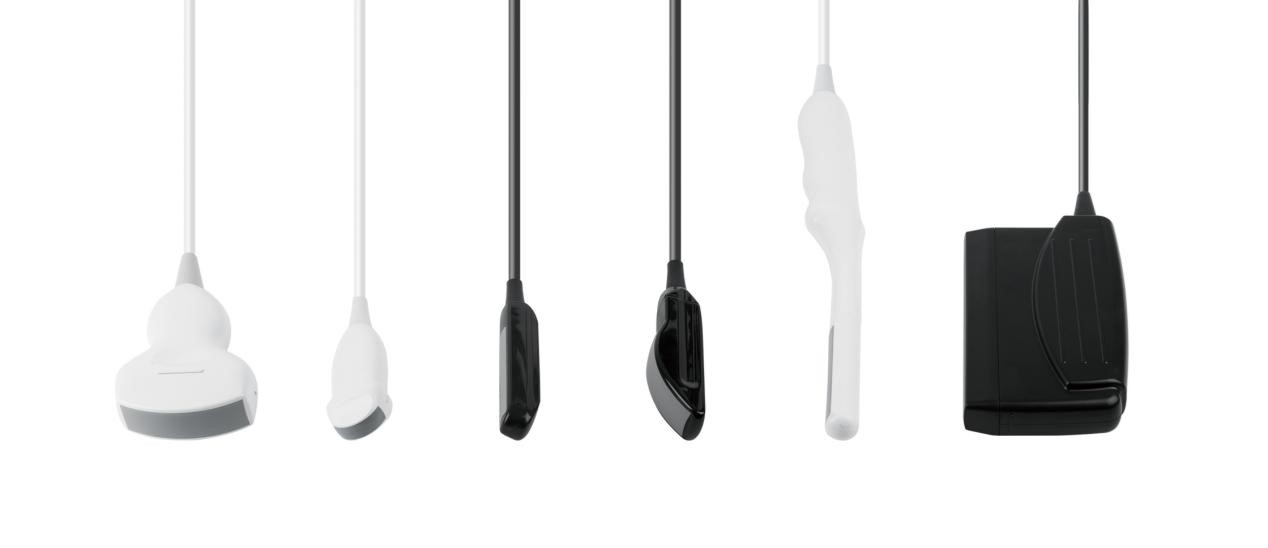Ultrasonic attenuation in the human body is related to ultrasonic frequency. The higher the probe frequency of B-ultrasound machine, the stronger the attenuation, the weaker the penetration, and the higher the resolution. High frequency probes were used in probing superficial organs. Low frequency probe with strong penetration is used to explore deep viscera.
B ultrasonic machine probe classification
1. Phased array probe: the probe surface is flat, the contact surface is the smallest, the near field field is the smallest, the far field field is large, the imaging field is fan-shaped, suitable for the heart.
2. Convex array probe: the probe surface is convex, the contact surface is small, the near field field is small, the far field field is large, the imaging field is fan-shaped, and it is widely used in the abdomen and lungs.
3. Linear array probe: the probe surface is flat, the contact surface is large, the near field field is large, the far field field is small, the imaging field is rectangular, suitable for blood vessels and small superficial organs.
Finally, the probe of B ultrasound machine is the core part of the whole ultrasonic machine. It is a very precise and delicate thing. We must pay attention to the probe in the process of use, and do it gently.

B ultrasonic probe frequency and type used in different parts inspection
1, chest wall, pleura and lung peripheral small lesions: 7-7.5mhz linear array probe or convex array probe
2, Liver ultrasound examination:
① Convex array probe or linear array probe
② Adult: 3.5-5.0mhz, children or lean adults: 5.0-8.0mhz, obese: 2.5mhz
3, Gastrointestinal ultrasound examination:
① Convex array probe is used for abdominal examination. The frequency is 3.5-10.0mhz, and 3.5-5.0mhz is the most commonly used
② Intraoperative ultrasound: 5.0-12.0mhz parallel array probe
③ Endoscopic ultrasound: 7.5-20mhz
④ Rectal ultrasound: 5.0-10.0mhz
⑤ Ultrasound-guided puncture probe: 3.5-4.0mhz, micro-convex probe and small phased array probe with puncture guide frame
4, kidney ultrasound: phased array, convex array or linear array probe, 2.5-7.0mhz; Children can choose higher frequencies
5, retroperitoneal ultrasound examination: convex array probe: 3.5-5.0mhz, thin person, available 7.0-10.0 high frequency probe
6, adrenal ultrasound: preferred convex array probe, 3.5mhz or 5.0-8.0mhz
7, brain ultrasound: two-dimensional 2.0-3.5mhz, color Doppler 2.0mhz
8, jugular vein: linear array or convex array probe, 5.0-10.0mhz
9. Vertebral artery: 5.0MHz
10. Bone joint soft tissue ultrasound: 3.5mhz, 5.0mhz, 7.5mhz, 10.0mhz
11, limb vascular ultrasound: line array probe, 5.0-7.5mhz
12, eyes: ≥ 7.5mhz, 10-15mhz is appropriate
13. Parotid gland, thyroid gland and testis ultrasound: 7.5-10mhz, linear probe
14, breast ultrasound: 7.5-10mhz, no high frequency probe, available 3.5-5.0mhz probe and water bag
15, Parathyroid ultrasound: linear array probe, 7.5mhz or more
This article was compiled and published by RUISHENG brand ultrasonic scanner.
Post time: Apr-26-2022
